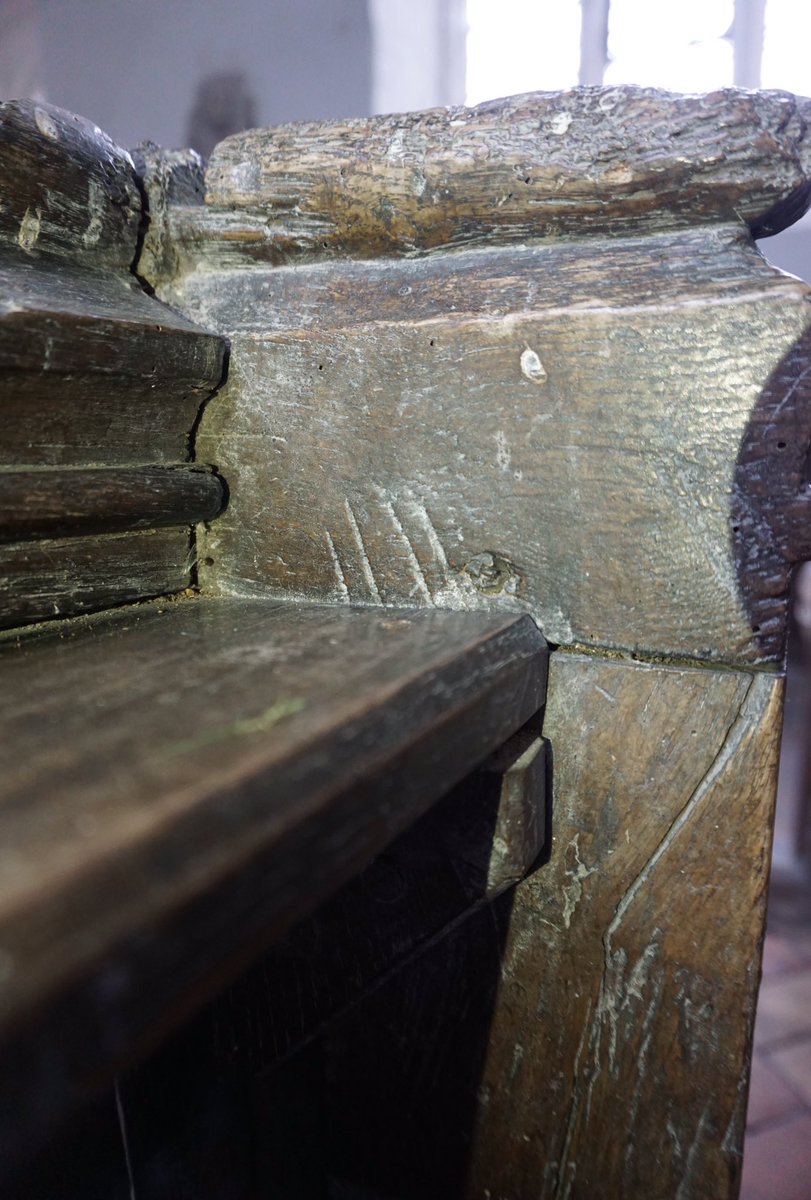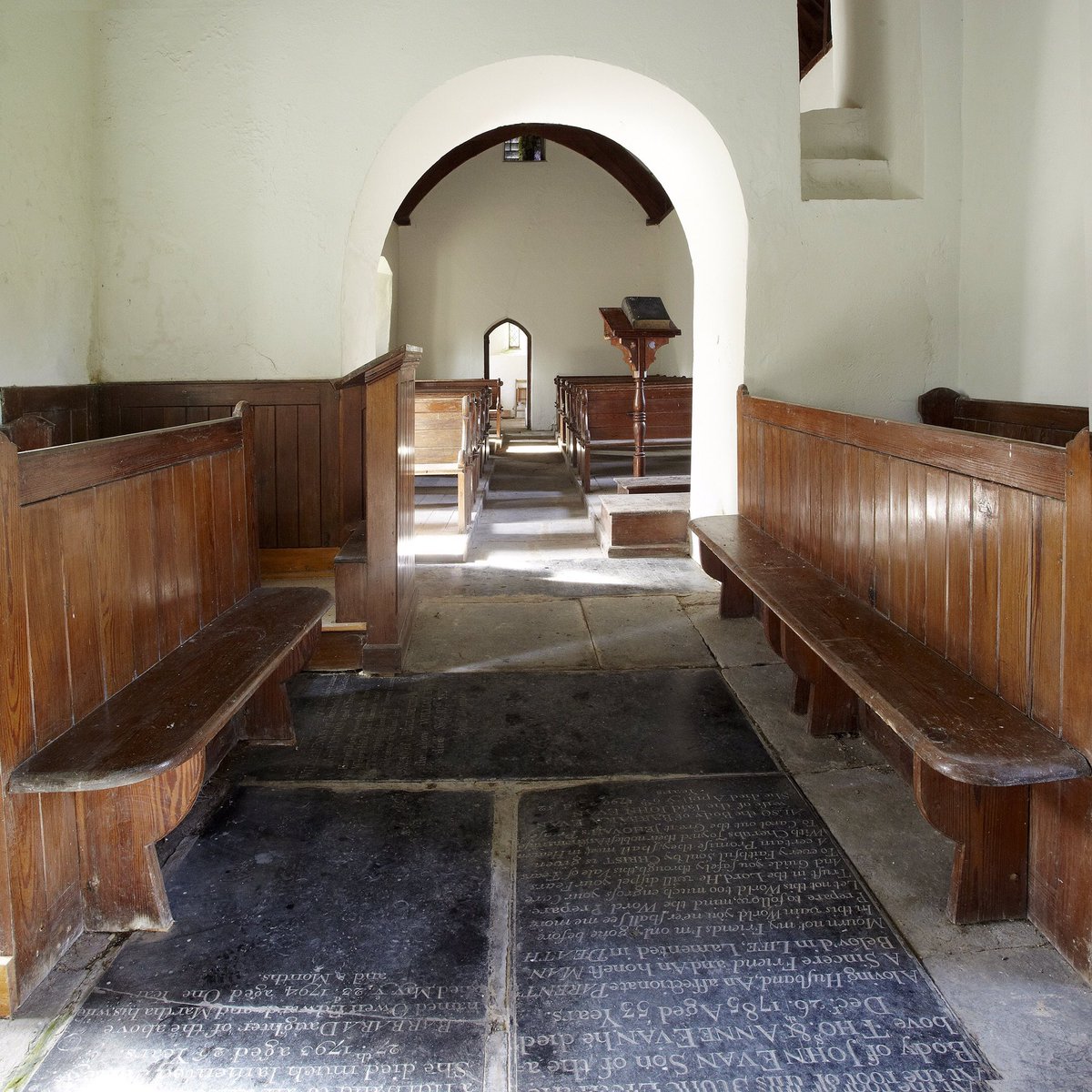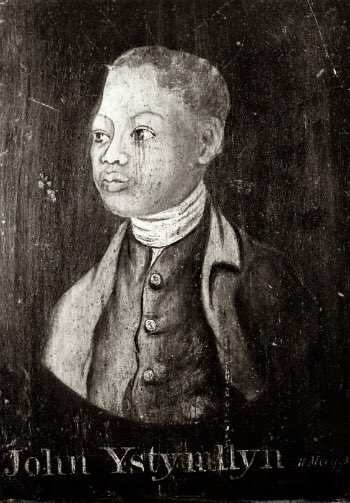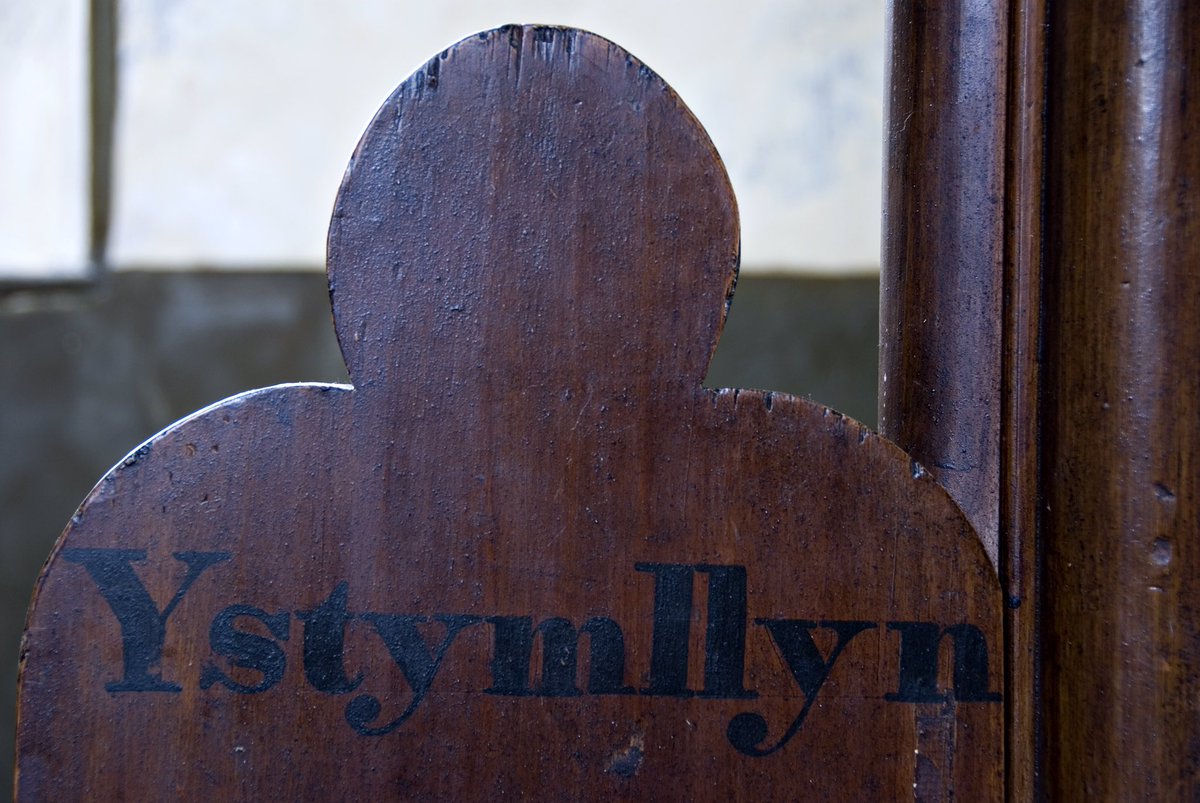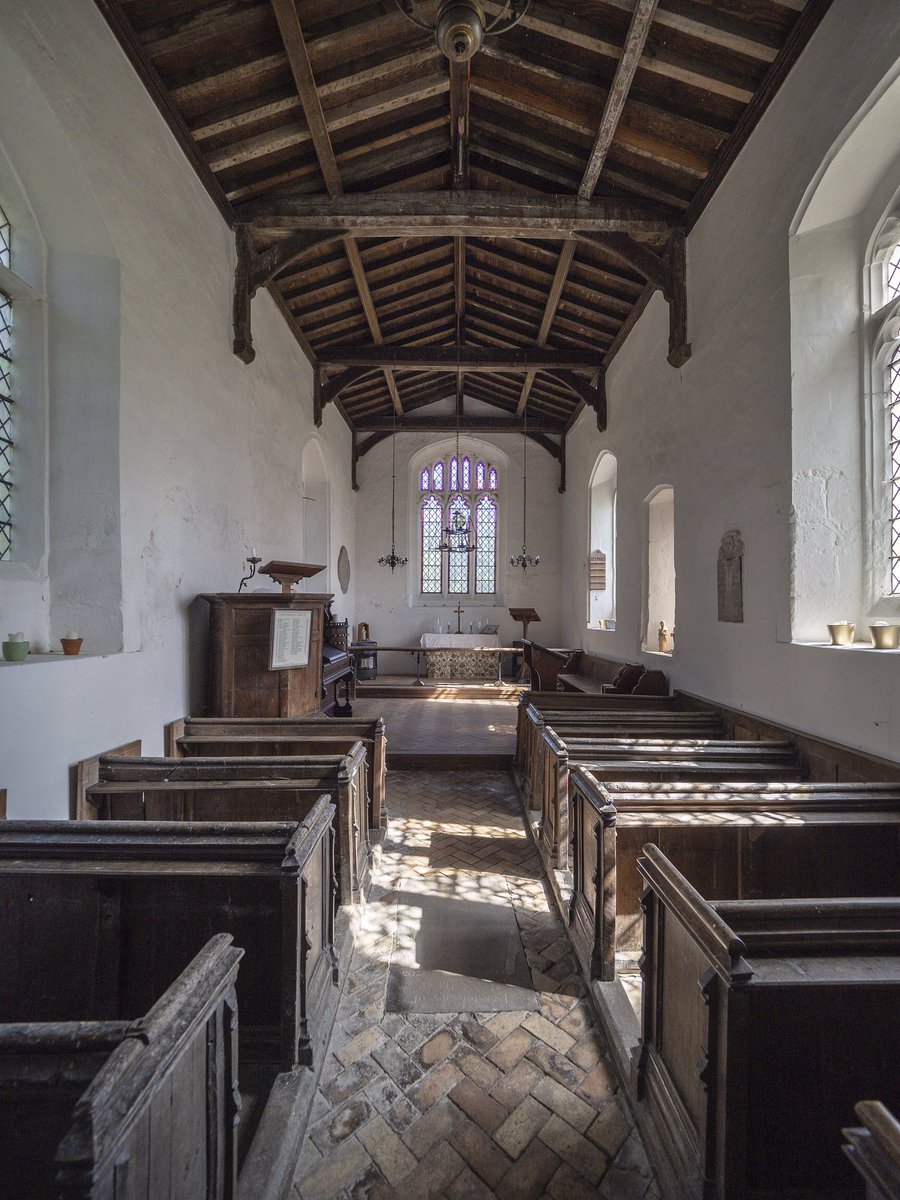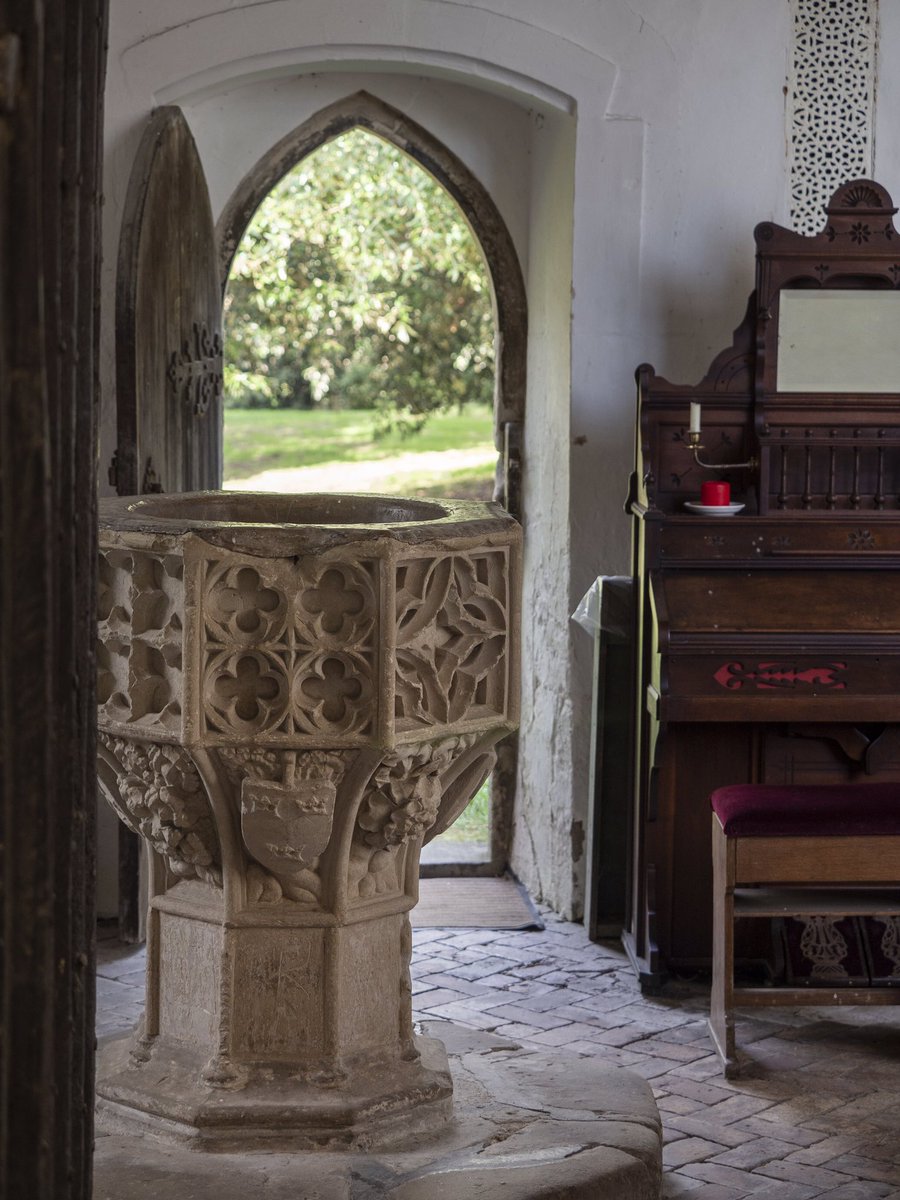
At the bottom of a dead-end, tucked down a steep slope is St Jerome’s, Llangwm Uchaf. It’s a quirky-looking church with a 15th-century octagonal turret tacked onto an off-centre, defensive-looking tower. Turning the door handle, you really wouldn’t expect to see… this
#thread
#thread

Despite dating from 1128, the chief glory of St Jerome’s is the late 15th-century screen, one of the finest in south Wales. It fills the entrance to the chancel and is “superabundantly encrusted with carved decoration”.
2/7
2/7

The screen is embellished with fleshy vines with small, tight bunches of grapes, a garden of floral bosses, and delicate architectural tracery.
3/7
3/7

The colour you see today was added in 1863, when J. P. Seddon restored the church. Seddon’s team also replaced missing elements on the screen, but did not stain them. This honest repair makes it easy to see what dates to the 1400s and what came centuries later.
4/7
4/7

The large window to the south was inserted in the early 16th century to illuminate the screen. Look closely and in the uppermost corners you'll find a silver-stain pomegranate: the symbol of Katherine of Aragon. Look closer and you'll see a Tudor rose.
5/7
5/7

This is significant as it could date the window to the short period when Katherine was married to Arthur, Prince of Wales.
6/7
6/7

The screen is really only the beginning at Llangwm Uchaf.
For more of this Monmouthshire marvel, have a look at our website: friendsoffriendlesschurches.org.uk/llangwm-uchaf/
7/7
For more of this Monmouthshire marvel, have a look at our website: friendsoffriendlesschurches.org.uk/llangwm-uchaf/
7/7

• • •
Missing some Tweet in this thread? You can try to
force a refresh




